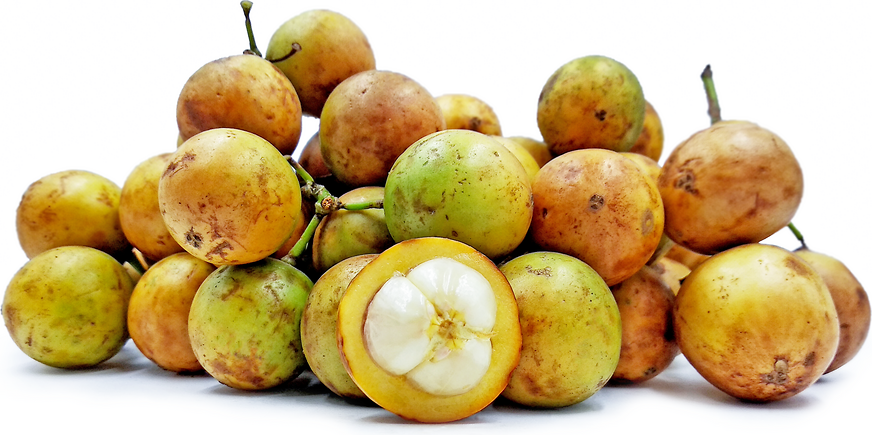


Menteng Fruit
Estimated Inventory, lb : 0
Description/Taste
Menteng fruit is small to medium in size, averaging 2-6 centimeters in diameter, and is round to oval in shape growing in dense clusters. The smooth skin has a slight sheen and is yellow-green when young, maturing to a blend of yellow and brown hues with many marks, spots, and scratches. Underneath the firm skin, there are 3-4 large seeds encased in white to red flesh, and the flesh is soft and aqueous. Menteng fruit has a predominately sour flavor with a hint of sweetness.
Seasons/Availability
Menteng fruit is available year-round in Southeast Asia.
Current Facts
Menteng, botanically classified as Baccaurea racemosa, is a globular fruit that grows on trees or shrubs that can reach up to twenty-five meters in height and belongs to the Phyllanthaceae family. Also known by many local names including Asam Tambun and Buah Kapundung, Menteng grows wild in the forests of Southeast Asia and is not commercially grown due to its sour nature. Menteng used to be a popular fruit tree as it bears a large amount of fruit throughout the year, but over time the variety has been replaced with new commercially cultivated fruits, almost being destroyed to the point of extinction.
Nutritional Value
Menteng fruits are a good source of phosphorus and calcium to help with structural bone health, and also contain some iron and vitamin C.
Applications
Menteng fruits are best suited for both raw and cooked applications such as stewing and boiling. When consumed fresh, the flesh can be eaten by itself or sprinkled with sugar, salt, or chile powder to help counteract the sour flavor. The fruit can also be juiced and used to flavor smoothies, juices, and cocktails. In addition to fresh applications, Menteng fruit can be stewed to remove the sour flavor, cooked into syrups, pickled as a condiment and side dish, or fermented for extended use. The fruits will keep for 3-4 days at room temperature and up to one week when stored in the refrigerator.
Ethnic/Cultural Info
In Jakarta, Indonesia, many regions of the city were name after the fruit trees that once grew on the land. Menteng used to be such a popular fruit found in Jakarta, that the city decided to name a high-class neighborhood in Central Jakarta after the fruit. This neighborhood is still considered to be one of the wealthier areas in Central Jakarta today, but the Menteng fruit has almost completely disappeared and is a rarity to find in the city. The fruit was mainly lost to urban development and the removal of trees to make room for more popular fruit tree varieties. Menteng is still planted in home gardens in Indonesia for its fruit and ornamental qualities, and the trees are sometimes used to make construction materials, ropes, and furniture.
Geography/History
Menteng fruit is native to Southeast Asia, especially to Indonesia, where it has been growing wild since ancient times. Today the fruit is only available in limited quantities at fresh local markets in select regions in Thailand, Indonesia, and Malaysia.













